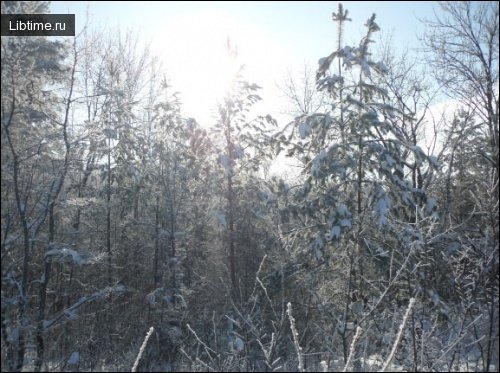How to navigate in winter
Who hasn't been surprised at how everything has changed in winter in an area familiar from summer? For a long time you look at the snow-covered trees and can't understand: is it the same curly grove that once sheltered you from the heat? In this article we will try to understand the signs of orienteering in the snow in winter. 
You won't find it on any map. Winter has taken over. The frost has shackled the rivers. Under the snow-white blanket the relief changed, pits were leveled, new bizarre hillocks and hills were formed. Snow drifts changed the shape of local objects. How to orient on the terrain in winter? If you can't see the heavens and don't have a compass? You have a constant guide - the Sun.
Its rays are such a powerful factor that you can find a lot of signs of their impact on nature and by them determine in which direction is the side of the horizon from where the strongest - midday - sun rays come to us.
Without map and compass in winter
The ability to navigate well in any conditions does not come at once, but you can learn it. You just need to be observant and know the signs that help you find the right way. Here are some signs for orienteering in winter:
- There is more snow on the northern side of trees, buildings and other objects, as it thaws faster on the southern side.

- In mountainous areas, snow melts faster on those slopes that are on the southern side. In flat or hilly terrain, snow on hills and hillocks melts faster on the south side.
- Snow in ravines, gullies and holes on the north side melts much earlier than on the south side. This is explained by the fact that the northern slopes of these formations receive more solar energy, as the sun's rays hit their surface at a more direct angle.
- In early spring, irregularly shaped holes appear in the snow around trees, stumps, various poles standing in the open: they seem to be stretched in one direction - to the south. Since the Sun in our latitudes shines most of the day from the south, the sun's rays are reflected from the southern side of the tree or pole. A scallop of snow is often visible on the north side of the holes.
- The surface of snow on the slopes of large drifts, facing the Sun, on the eve of winter and in early spring as if eaten, "bristled", forming a kind of protrusions, separated by depressions. It is characteristic that all these protrusions are parallel and not only directed to the south, but the angle of their inclination corresponds to the height of the noon Sun at the place of observation.

Winter directional signs
When choosing winter landmarks, you should take into account that on a snowy background, especially in sunny weather or on a moonlit night, all dark objects - bushes, forest edge, buildings, etc. - are brightly drawn out. If you set off on the road by car or bicycle, you should clarify the forthcoming route in advance by interviewing local residents.
It is necessary to establish the direction and passability of winter roads, study the map or route diagram, find out the width and condition of the road, the depth of snow cover along the roadsides, the nature of obstacles hidden under the snow, the condition of river and lake areas, the thickness of ice and possible detours.
When moving off-road on skis, you should choose linear landmarks, such as rivers, streams, railroads, highways and dirt roads lined with trees, forest edges, fences, gullies, ravines, ridges, etc., if their direction coincides with the given direction. Of course, it is also necessary to know where the road leads from and where it leads to, in which direction in relation to the sides of the horizon the river, stream or ravines, ridges, etc. are located.
In winter it is not always easy to spot a snow-covered watercourse or a snow-covered country road. Consequently, you need to be especially attentive and develop the skills of observation and memorization. Cliffs facing away from the wind sometimes have a snow canopy. 

Ripples, the most common form of snow surface, are located across, perpendicular to the wind. It is difficult to walk on snow waves (jagged snow), but it is good to orient oneself knowing the direction of the wind that created them.
For example, S. V. Obruchev mentions that in Chukotka he had to follow the direction of snow drifts during a blizzard. They are often used as landmarks in the Arctic.
Frost on trees can also be oriented. It is formed on branches mainly on the wind side. During short routes, you orient yourself by the wind direction at the moment. For example, if it is necessary to leave the camping site in search of water, firewood, etc., you should remember the wind direction.
If it blows in your face when you leave, it should blow in your back when you return.


